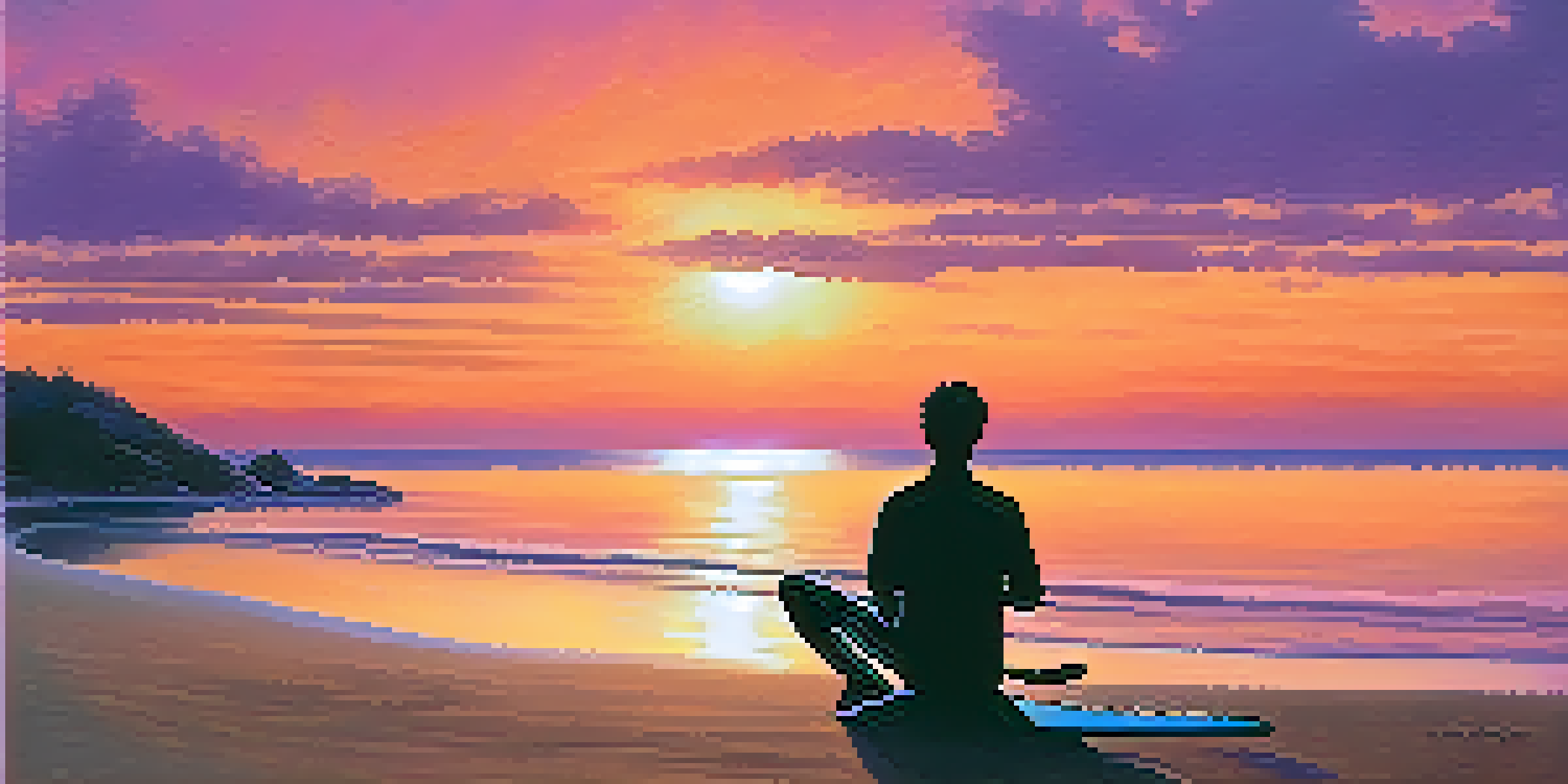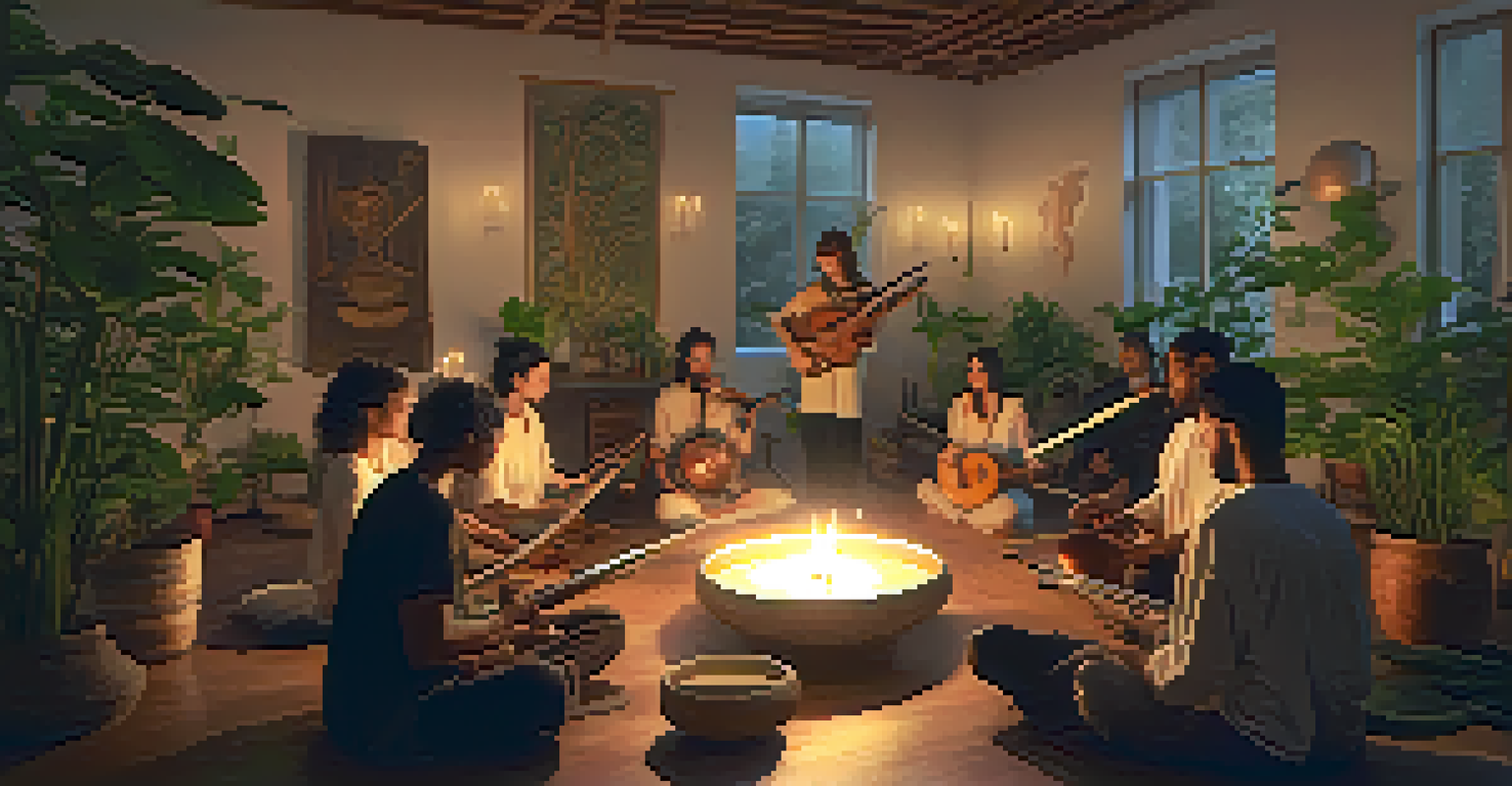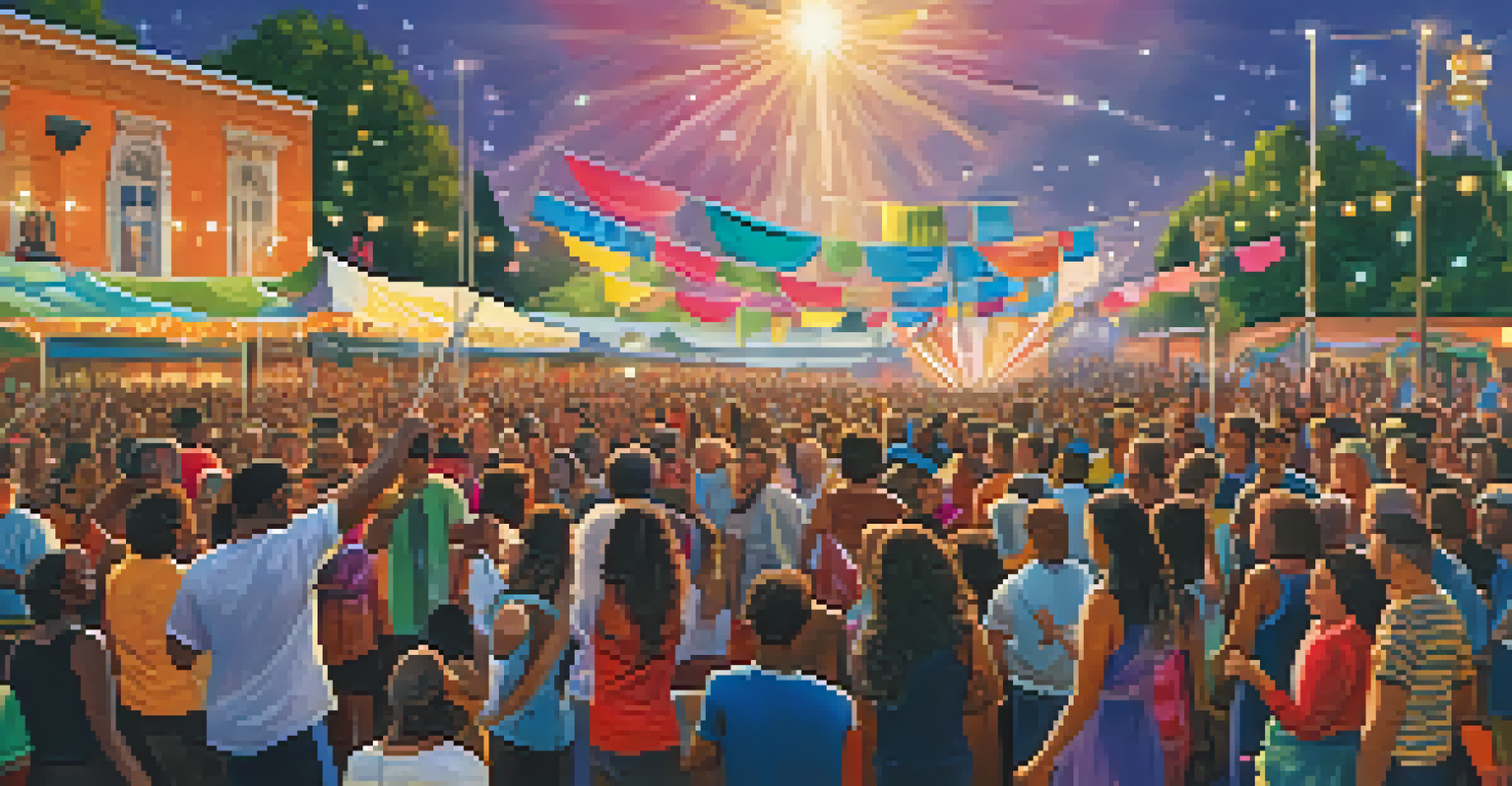The Intersection of Music and Spirituality in Artistic Creation

Understanding the Roots of Music and Spirituality
Music has long been intertwined with spiritual practices across cultures. From ancient rituals to modern ceremonies, melodies have been used to connect individuals to a higher power. This deep-rooted relationship highlights how music serves as a conduit for spiritual expression and experience.
Music is the shorthand of emotion.
Many cultures believe that music can elevate the soul, enabling individuals to tap into something greater than themselves. For instance, in many indigenous traditions, music accompanies rites of passage and healing, illustrating its role in fostering a sense of community and connection.
This intersection of music and spirituality is not just historical; it continues to influence contemporary artists. Musicians often draw on spiritual themes, exploring concepts of love, loss, and transcendence, which resonate deeply with their audiences.
The Role of Ritual in Musical Creation
Rituals form an essential part of the creative process for many musicians. These practices often create a sacred space that allows artists to explore their spirituality through sound. Whether it’s a daily meditation before songwriting or performing a traditional ceremony before a concert, rituals help ground the artist in their work.

For example, some musicians engage in sound baths, where they immerse themselves in resonant frequencies to stimulate creativity and introspection. This practice not only enhances their connection to music but also invites a deeper spiritual experience that can inform their artistic output.
Music Connects Us Spiritually
Across cultures, music has been a vital tool for spiritual expression, connecting individuals to deeper meanings and shared experiences.
By embracing ritual, artists can navigate their emotional landscapes and channel their experiences into their music, resulting in pieces that resonate on both personal and universal levels. This blend of spirituality and creativity enriches the artistic landscape.
The Influence of Spirituality on Musical Genres
Different musical genres often reflect distinct spiritual beliefs and practices. For instance, gospel music is deeply rooted in Christian traditions, expressing themes of faith, hope, and redemption. The powerful emotional delivery in gospel performances often uplifts both the artist and the audience, creating a shared spiritual experience.
The music is not in the notes, but in the silence between.
Similarly, genres like reggae and bhangra incorporate elements of spirituality and cultural identity, often addressing social issues through a spiritual lens. These genres serve as platforms for artists to communicate messages of peace, resilience, and communal harmony.
Through their unique sounds and messages, these genres demonstrate how spirituality can shape musical expression, allowing artists to connect with listeners on a profound level. This connection fosters a sense of belonging and shared understanding among diverse audiences.
The Healing Power of Music and Spirituality
Many people turn to music as a source of healing during difficult times. The therapeutic effects of music, often intertwined with spiritual beliefs, can provide comfort and solace. For instance, music therapy is increasingly recognized for its ability to aid emotional recovery, showcasing the powerful link between music and spirituality.
Listening to or creating music can facilitate a meditative state, helping individuals process grief, anxiety, or trauma. The emotional release that comes from engaging with music can feel like a spiritual cleansing, allowing for personal transformation and growth.
Rituals Enhance Musical Creation
Many musicians incorporate rituals into their creative processes, helping them explore spirituality and emotional depth through sound.
Artists who share their healing journeys through music often inspire others to seek their own paths to recovery. By addressing universal struggles and celebrating resilience, these musicians create a collective space for healing through their art.
Finding Inspiration in Nature and Spirituality
Nature has always served as a muse for artists, often intertwining with spiritual beliefs. The sights and sounds of the natural world can evoke deep emotions, prompting musicians to channel these experiences into their work. Whether it’s the rustling of leaves or the crash of ocean waves, these elements can spark creativity and inspiration.
For many, spending time in nature enhances their spiritual connection, allowing them to reflect on their thoughts and feelings. This connection often translates into their music, creating melodies that resonate with listeners on an emotional level.
By drawing parallels between nature and spirituality, artists can create music that not only reflects their personal experiences but also invites listeners to connect with the world around them. This synergy fosters a deeper appreciation for both art and the environment.
Collaboration: Merging Spirituality in Musical Projects
Collaboration among musicians often leads to the blending of diverse spiritual influences. When artists from different backgrounds come together, they create a unique tapestry of sounds and ideas, reflecting a rich cultural exchange. This collaborative spirit can enhance the spiritual depth of their music, offering listeners a multifaceted experience.
For instance, collaborations between traditional and contemporary musicians can result in innovative sounds that honor spiritual practices while appealing to modern audiences. This fusion not only showcases the versatility of music but also highlights the shared human experience across cultures.
Nature Inspires Musical Expression
The beauty of nature often serves as a muse for artists, intertwining their spiritual reflections with the melodies they create.
By working together, artists can amplify their spiritual messages and reach a broader audience. This collective approach to creativity fosters understanding and empathy, reinforcing the idea that music serves as a universal language of spirituality.
The Future of Music and Spirituality in Art
As the world evolves, so too does the relationship between music and spirituality. New technologies and platforms are emerging that allow artists to explore and share their spiritual journeys in innovative ways. This evolution provides opportunities for musicians to reach wider audiences and deepen their connections with listeners.
Incorporating elements like virtual reality or interactive experiences can enhance the spiritual aspect of music, creating immersive environments that invite personal reflection. These advancements challenge traditional boundaries of artistic expression, offering fresh perspectives on the intersection of music and spirituality.

Ultimately, the future of music and spirituality in art lies in the hands of the next generation of artists. By embracing their unique experiences and perspectives, they can continue to shape this relationship, fostering a deeper understanding of the spiritual dimensions of creativity.